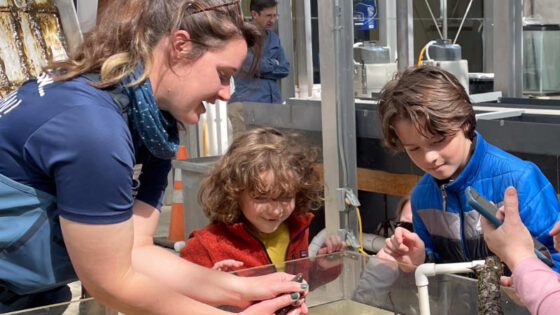He, C., D. Fucich, A. Sosa, H. Wang, J. Kan, J. Liu, Y. Xu, N. Jiao, M. Gonsior, and F. Chen. 2024. Communications Biology 7, 853.
Permalink/DOI (Open access)
Abstract
SAR202 bacteria in the Chloroflexota phylum are abundant and widely distributed in the ocean. Their genome coding capacities indicate their potential roles in degrading complex and recalcitrant organic compounds in the ocean. However, our understanding of their genomic diversity, vertical distribution, and depth-related metabolisms is still limited by the number of assembled SAR202 genomes. In this study, we apply deep metagenomic sequencing (180 Gb per sample) to investigate microbial communities collected from six representative depths at the Bermuda Atlantic Time Series (BATS) station. We obtain 173 SAR202 metagenome-assembled genomes (MAGs). Intriguingly, 154 new species and 104 new genera are found based on these 173 SAR202 genomes. We add 12 new subgroups to the current SAR202 lineages. The vertical distribution of 20 SAR202 subgroups shows their niche partitioning in the euphotic, mesopelagic, and bathypelagic oceans, respectively. Deep-ocean SAR202 bacteria contain more genes and exhibit more metabolic potential for degrading complex organic substrates than those from the euphotic zone. With deep metagenomic sequencing, we uncover many new lineages of SAR202 bacteria and their potential functions which greatly deepen our understanding of their diversity, vertical profile, and contribution to the ocean’s carbon cycling, especially in the deep ocean.



